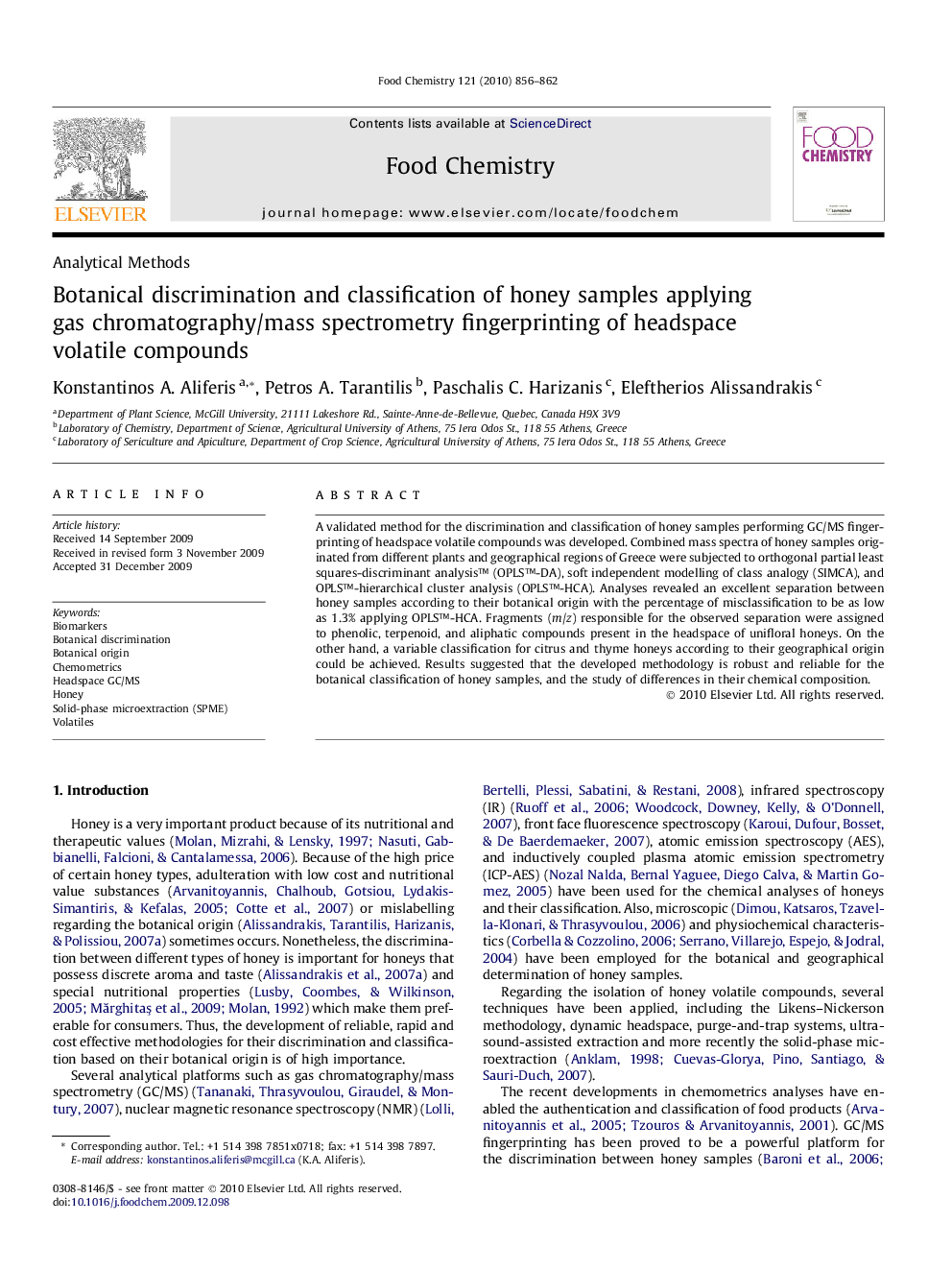| Article ID | Journal | Published Year | Pages | File Type |
|---|---|---|---|---|
| 1186656 | Food Chemistry | 2010 | 7 Pages |
A validated method for the discrimination and classification of honey samples performing GC/MS fingerprinting of headspace volatile compounds was developed. Combined mass spectra of honey samples originated from different plants and geographical regions of Greece were subjected to orthogonal partial least squares-discriminant analysis™ (OPLS™-DA), soft independent modelling of class analogy (SIMCA), and OPLS™-hierarchical cluster analysis (OPLS™-HCA). Analyses revealed an excellent separation between honey samples according to their botanical origin with the percentage of misclassification to be as low as 1.3% applying OPLS™-HCA. Fragments (m/z) responsible for the observed separation were assigned to phenolic, terpenoid, and aliphatic compounds present in the headspace of unifloral honeys. On the other hand, a variable classification for citrus and thyme honeys according to their geographical origin could be achieved. Results suggested that the developed methodology is robust and reliable for the botanical classification of honey samples, and the study of differences in their chemical composition.
